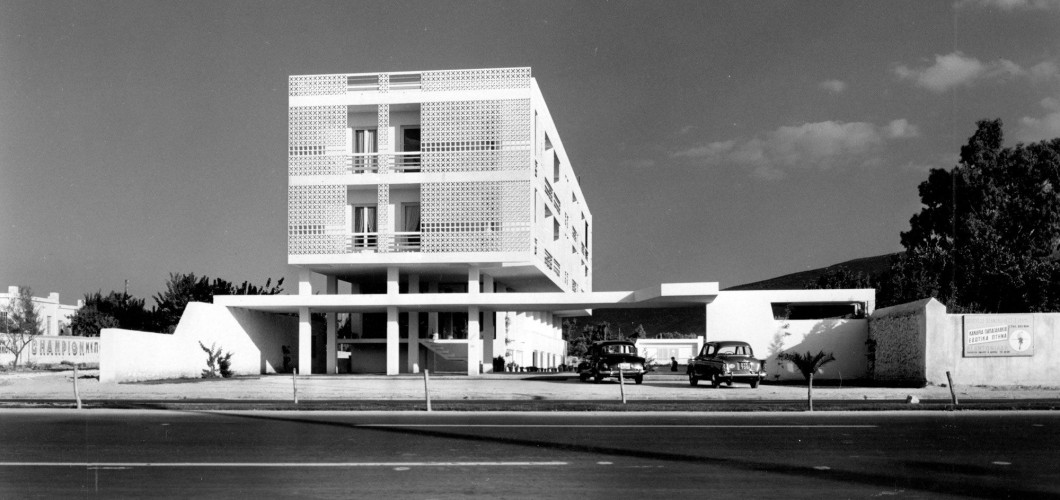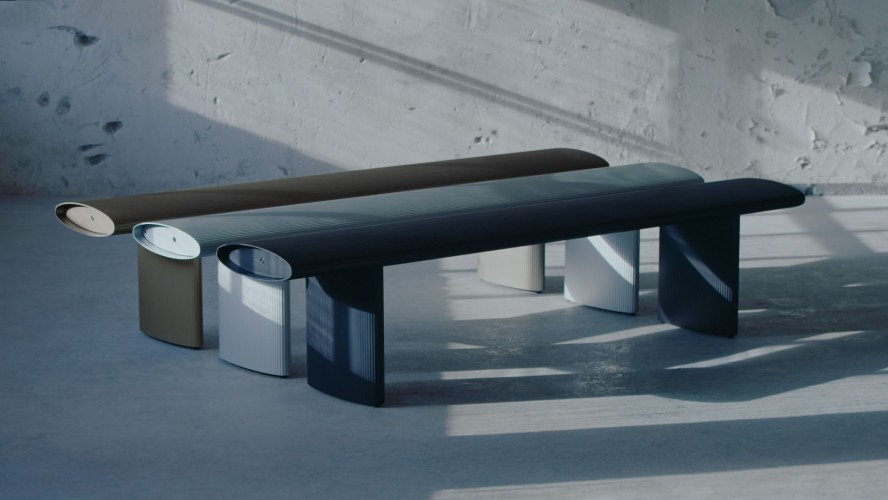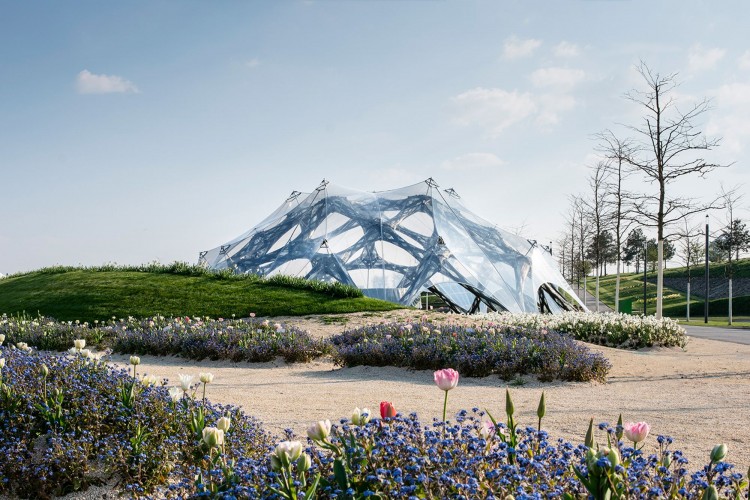Design: «Καλλιεργώντας» νέες συνήθειες
DS.WRITER:
Christina Ioakeimidou
Κεντρική Εικόνα: Glow (Studio Roosegaarde) | Πηγή: thisiscolossal.com
Το design και οι τομείς του αρχιτεκτονικού σχεδιασμού έχουν ταυτιστεί -και όχι αδίκως- με την παρέμβαση στο φυσικό περιβάλλον, και κατ’ επέκταση την αλλοίωσή του. Όμως, υπάρχουν και ορισμένες περιπτώσεις, όπου ο σχεδιασμός μπορεί να ασχοληθεί με την ανάπτυξη της καλλιέργειας, συμβάλλοντας στον επαναπροσδιορισμό των πρακτικών της, και παράλληλα προωθώντας ή αμφισβητώντας τά νέα μοτίβα διατροφής ή τον τρόπο που προσεγγίζουμε το φαγητό. Στο παρόν άρθρο θα αναφερθούν μερικά από τα πρότζεκτ που εμείς ξεχωρίσαμε, και τα οποία αφορούν ένα ευρύ φάσμα από την καλλιέργεια μέχρι την υπερκατανάλωση τροφίμων.
Η θέση του σχεδιασμού στην καλλιέργεια
Νέοι τρόποι καλλιέργειας, με σκοπό τη βιωσιμότητα, είναι στο επίκεντρο του κρατικού και ιδιωτικού ενδιαφέροντος, χωρίς προς το παρόν να αποδίδουν ιδιαίτερους καρπούς. Ναι, είναι νωρίς ακόμη, αφού οι προσπάθειες έγιναν εντονότερες τα τελευταία χρόνια, ωστόσο ενδέχεται να αυτo-σαμποτάρονται από τον τρόπο που η καλλιέργεια προσεγγίζεται. Πόσο βιώσιμος είναι ο τρόπος καλλιέργειας; Ποια η ποσότητα των λιπασμάτων που χρησιμοποιείται ετησίως; Και, κυρίως, πώς μπορούμε να παράγουμε περισσότερα, προκαλώντας λιγότερα δεινά στο περιβάλλον; Αυτά είναι κάποια σχετικά ερωτήματα, η απάντηση των οποίων ακόμη είναι προς αναζήτηση, αν και, όπως φαίνεται, μια νέα γενιά designers ξεκίνησε να πειραματίζεται με νέες πρακτικές και λύσεις που κρίνονται ιδιαιτέρως ελπιδοφόρες. Ένα παράδειγμα τέτοιων προσπαθειών είναι το Terra Nova, εμπνευσμένο και σχεδιασμένο από τον Ryan Waterhouse. Αυτός ο φορητός μετρητής είναι ικανός να παρακολουθεί το καλλιεργημένο έδαφος, ελέγχοντας τα επίπεδα θρεπτικών συστατικών (όπως κάλιο, άζωτο και φώσφορο) και υγρασίας. Έτσι, επιτηρώντας το, ο εκάστοτε καλλιεργητής μπορεί να συμπεραίνει το πόσο υγιές είναι το έδαφος, αλλά και πόσα και ποια θρεπτικά συστατικά περνούν στα καλλιεργημένα τρόφιμα, ενώ μπορεί να διορθώσει την όποια βλάβη ευκολότερα και γρηγορότερα. Επιπλέον, λόγω του σχεδιασμού της, η έξυπνη αυτή συσκευή δεν είναι ρυπογόνος, είναι εύκολη στην ανάγνωση και τη χρήση της, καθώς επίσης τα αποτελέσματα αποστέλλονται ψηφιακά σε υπολογιστή.
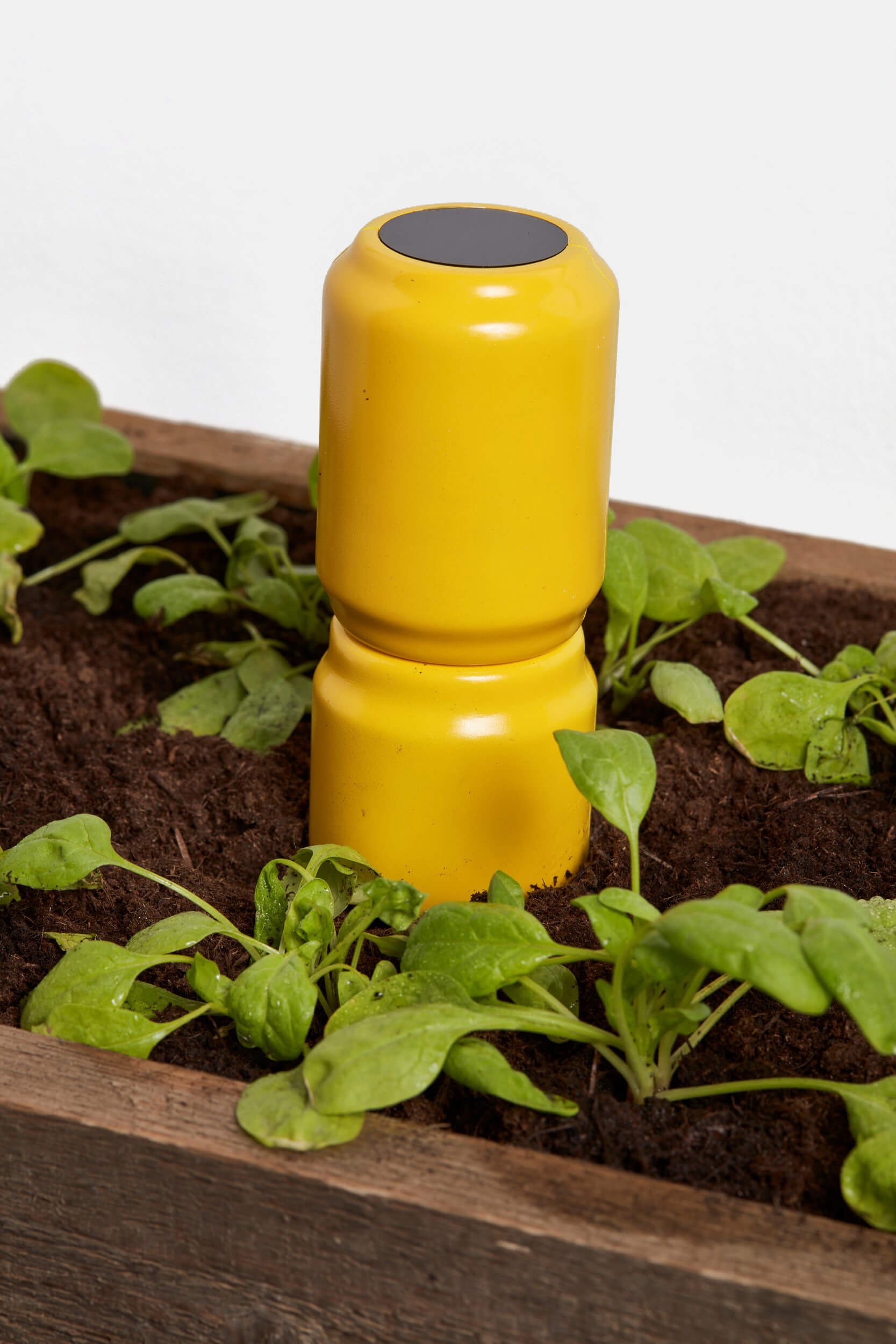
Terra Nova (Ryan Waterhouse) | Πηγή εικόνας: stirworld.com
Στο ίδιο μοτίβο βελτίωσης των καλλιεργειών κινείται και η δουλειά του Studio Roosegaarde με το πρότζεκτ Glow. Η 20.000 τετραγωνικών μέτρων εγκατάσταση χρησιμοποιεί κόκκινο, μπλε και υπεριώδες φως σε ανοιχτές καλλιεργημένες εκτάσεις της Ολλανδίας –η χώρα άλλωστε είναι μία γεωργική υπερδύναμη. Στόχος, ωστόσο, του Daan Roosegaarde δεν ήταν μόνο η ανάδειξη της ομορφιάς της καλλιέργειας, αλλά η βοήθεια για τη βελτίωσή της, αφού νέες μελέτες που ήρθαν στο φως δείχνουν πως ο φωτοβιολογικός φωτισμός μπορεί να βοηθήσει στην ποιοτική ανάπτυξη των φυτών, απομακρύνοντας τους κινδύνους των παρασίτων και άλλων ασθενειών. Έτσι, ενεργοποιώντας τόν αμυντικό μηχανισμό των φυτών μέσω του φωτός, αποφεύγεται η χρήση λιπασμάτων και άλλων επιβλαβών φυτοφαρμάκων, συμβάλλοντας στην ανάπτυξη μιας ευκολότερης βιολογικής καλλιέργειας.
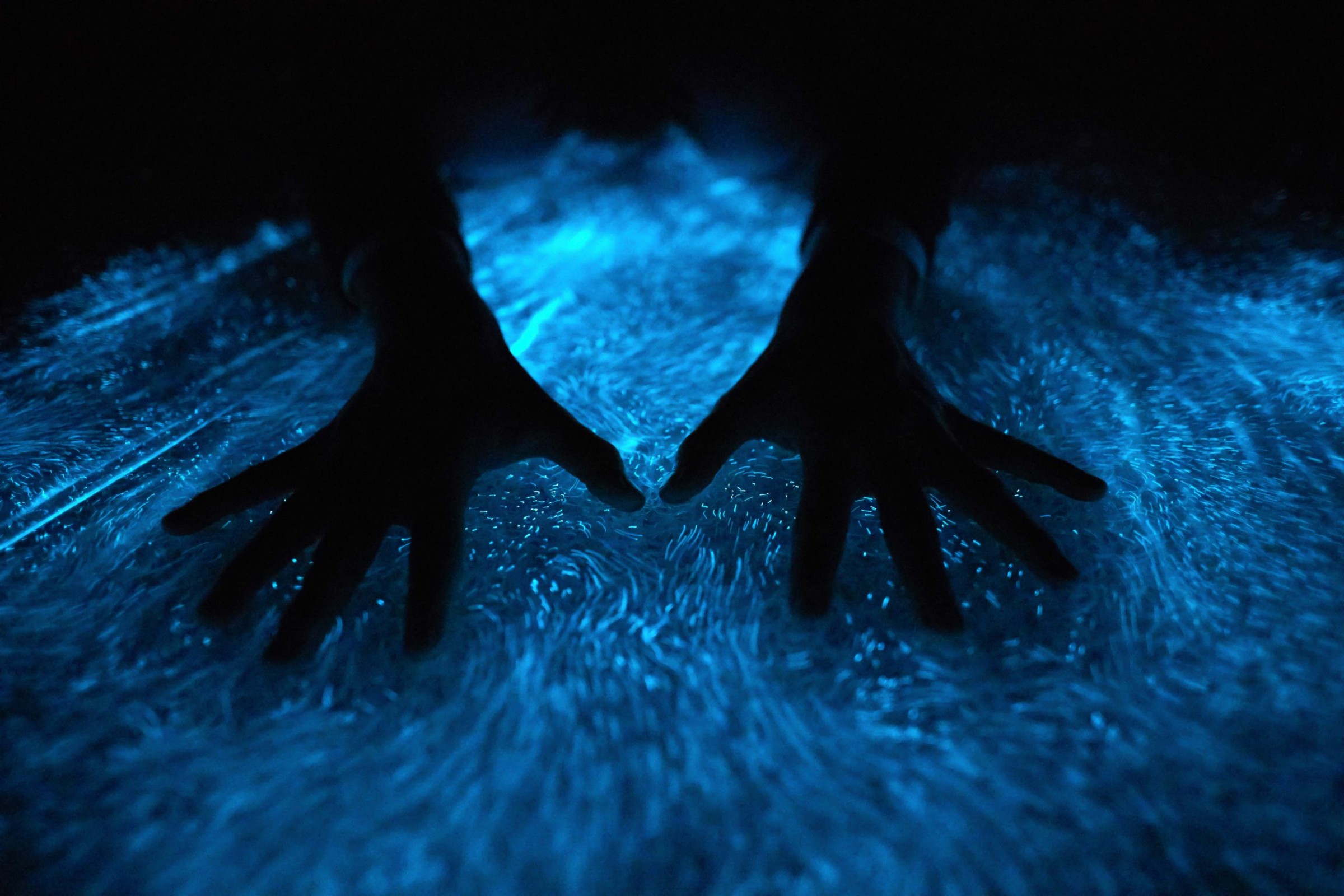
Glow project | Πηγή εικόνας: belmoncreative.nl
Ενδιαφέρον επίσης προκαλούν οι προσπάθειες προώθησης και προστασίας της βιοποικιλότητας, σε μία εποχή που, βάσει μελετών, οι μέλισσες κινδυνεύουν από εξαφάνιση στις μεγάλες πόλεις εξαιτίας της έλλειψης περιοχών πρασίνου. Ένας τρόπος αντιμετώπισης αυτού του φαινομένου προτάθηκε από το συμβούλιο των πόλεων Brighton και Hove στην Αγγλία –παρόμοιες πολιτικές υιοθετήθηκαν και από άλλες πόλεις της χώρας, όπως το Cornwall και το Dorset. Σύμφωνα με την πρόταση, η λύση βρίσκεται στο κατασκευαστικό κομμάτι των κτηρίων και συγκεκριμένα στη χρήση ειδικών τούβλων με οπές, οι οποίες θα μπορούν να φιλοξενούν τις μοναχικές μέλισσες. Τα bee bricks, όπως ονομάστηκαν, είναι ικανά να παρέχουν μία αντιγραφή μιας κυψέλης, που, σύμφωνα με τη Faye Clifton της εταιρείας Green&Blue (που παράγει το συγκεκριμένο οικοδομικό υλικό), δυστυχώς φαίνεται να αφανίζεται λόγω της όλο και αυξανόμενης κατασκευαστικής δραστηριότητας.
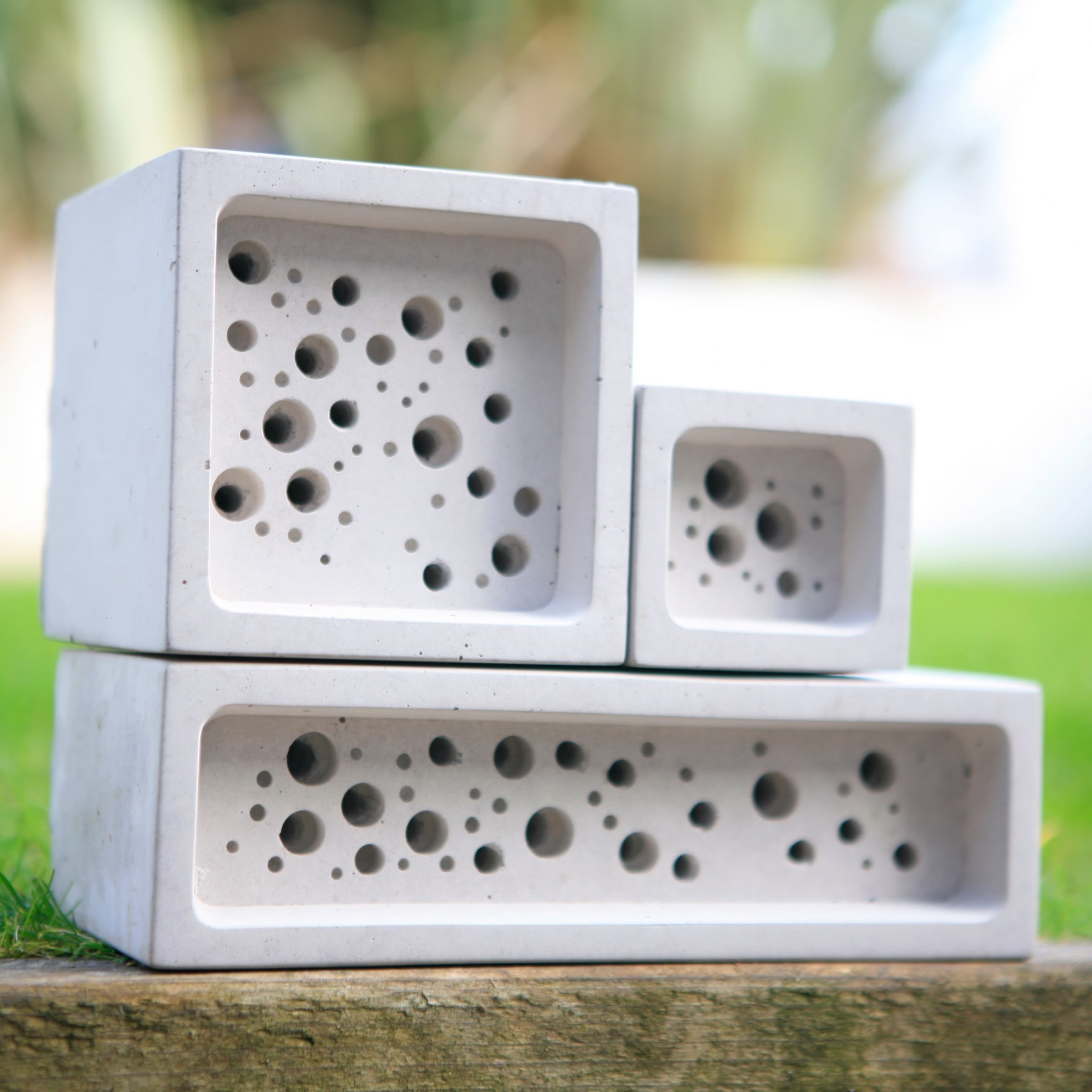
Πηγή εικόνας: img.crocdn.co.uk
Μένοντας στον κατασκευαστικό τομέα, η Agrotopia, έργο των Meta Architectuurbureau και Van Bergen Kolpa Architecten, είναι μία καινοτόμα κίνηση ανοίγματος της γεωργίας στο κοινό. Εκμεταλλευόμενοι τη στέγη της αγροτικής αγοράς στην πόλη Roeselare του Βελγίου, οι αρχιτέκτονες ενέταξαν σε αυτήν ένα θερμοκήπιο, το οποίο τώρα έχει άμεση σχέση με την αγορά των παραγόμενων προϊόντων, ενώ δίνει τη δυνατότητα στους επισκέπτες της αγοράς να ενημερωθούν και να δουν τον τρόπο καλλιέργειας των τροφίμων που καταναλώνουν. Με τον τρόπο αυτόν, το κτήριο-προσθήκη (κατασκευασμένο από χάλυβα και γυαλί) λειτουργεί ως «εκπαιδευτήριο» στις βρώσιμες πρώτες ύλες.
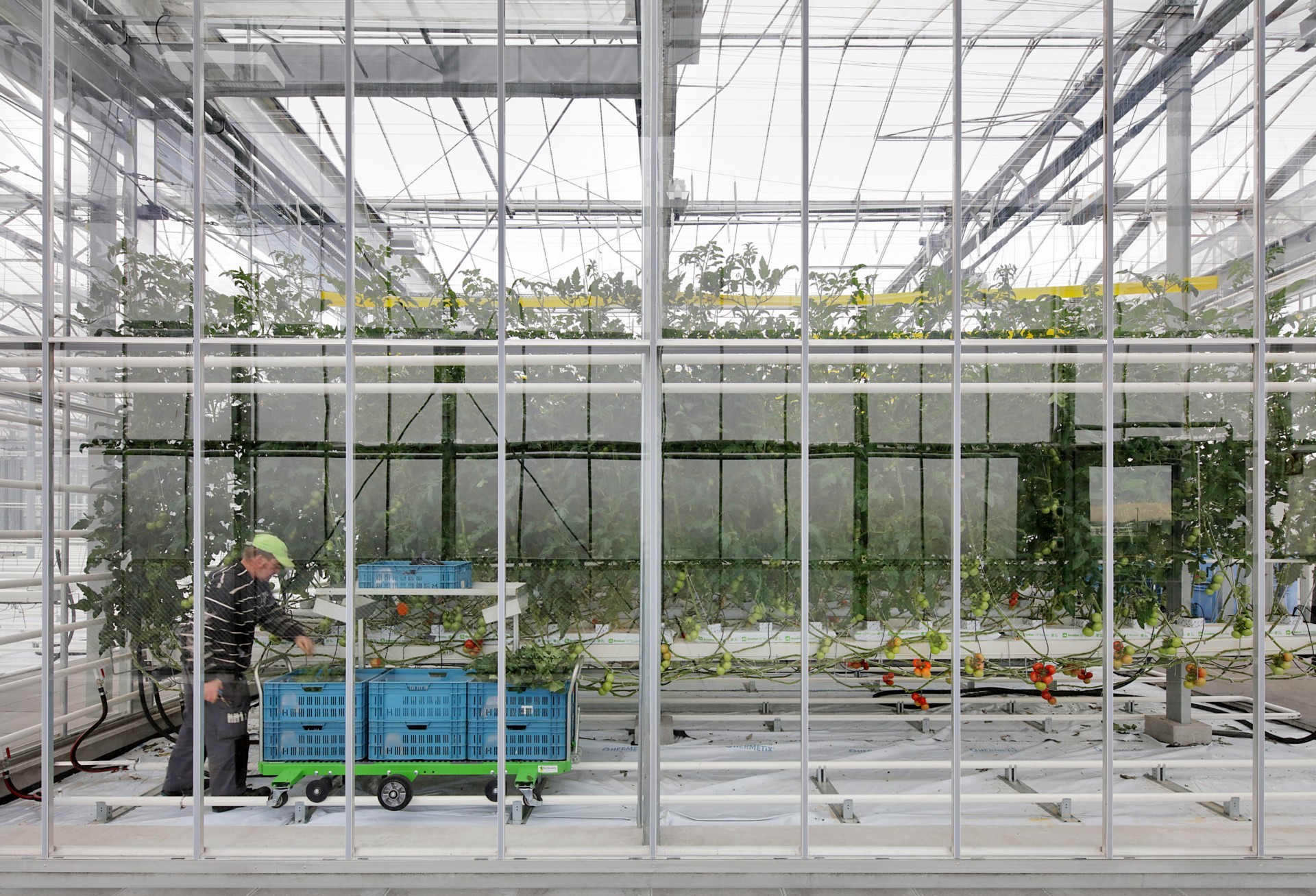
Agrotopia, Βέλγιο | Πηγή εικόνας: floornature.de
Μπορεί, όμως, το design να συσχετιστεί περισσότερο με τα τρόφιμα και τη διατροφή;
Design και υπερκατανάλωση
Το πρότζεκτ Volumes της Marije Vogelzang, που είχε σχεδιαστεί τόσο έξυπνα και πρωτότυπα, δίνει μια πρώτη γεύση της υπερκαταναλωτικής κουλτούρας αναφορικά με το φαγητό. Έτσι, δύσκολα κανείς καταλαβαίνει ότι τα volumes (απλές πέτρες με επίστρωση ασφαλούς και ανθεκτικής στη θερμότητα σιλικόνης), που τοποθετούνται στη μέση ενός μεγάλου πιάτου με φαγητό, δημιουργούν στον θεατή την ψευδαίσθηση μεγάλης ποσότητας τροφής. Η λογική πίσω από το πρότζεκτ-πείραμα είναι να αποδειχθεί, ότι ο ανθρώπινος εγκέφαλος επηρεάζεται από την οπτική επαφή με μια εσφαλμένα μεγάλη ποσότητα φαγητού, η οποία του αυξάνει το αίσθημα ικανοποίησης. Σκοπός της Vogelzang είναι η απομάκρυνση από αυτό το συμπεριφορικό μοτίβο λήψης τροφής, που οδηγεί κατά πάσα πιθανότητα στην επιθυμία για περισσότερη τροφή και κατ’ επέκταση στην υπερκατανάλωσή της.
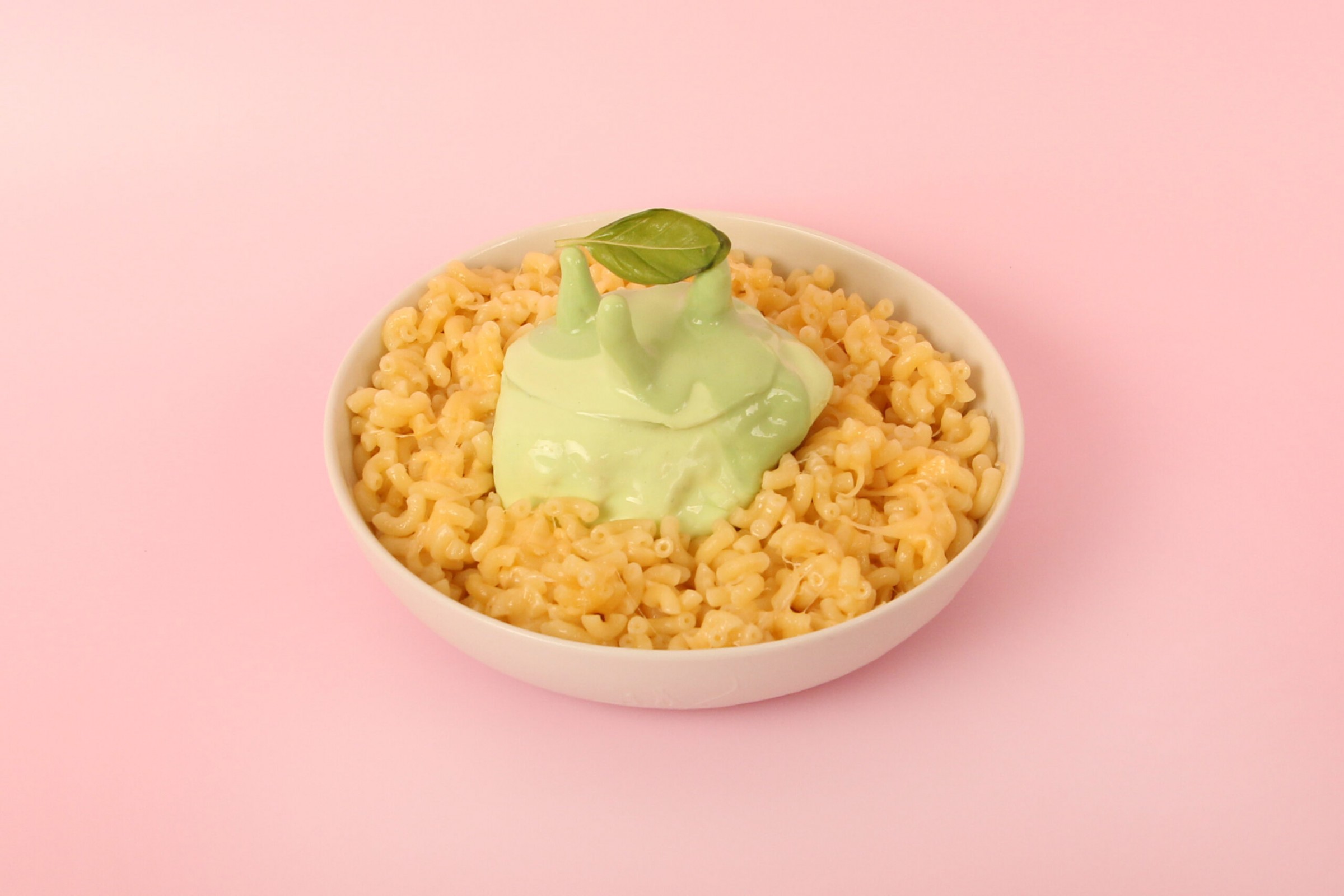
Volumes (Marije Vogelzang) | Πηγή εικόνας: marijevogelzang.nl
Ίσως, όμως, η αλλαγή στη στάση των ανθρώπων απέναντι στο φαγητό, και ιδιαίτερα στα καλλιεργήσιμα τρόφιμα, επιτευχθεί, όταν καταλάβουμε το πώς καλλιεργούνται και αναλογιστούμε τις συνέπειες της υπερκαλλιέγειας στο έδαφος, πόσο μάλλον τώρα, που ο βιγκανισμός έχει γίνει τάση. Μία τάση, αρχικά, ελπιδοφόρα -αφού προωθεί την αειφορία και τη μείωση της εκμετάλλευσης των ζώων- που, όμως, αν δεν διαχειριστεί ορθά και με σύνεση, μπορεί να φέρει τα αντίθετα αποτελέσματα.
Further reading and Sources:
Terra Nova soil monitor. Aπό: theindexproject.org.
S. Marsh (2022). Brighton bee bricks initiative may do more harm than good, say scientists. Από: theguardian.com.
P. Pintos. Agrotopia Research Center for Urban Food Production / van Bergen Kolpa architects + META architectuurbureau. Από: archdaily.com.
**Περισσότερα για το Glow του Studio Roosegaarde, στο: studioroosegaarde.net.
**Περισσότερα για το Volumes της Marije Vogelzang, στο: marijevogelzang.nl.






